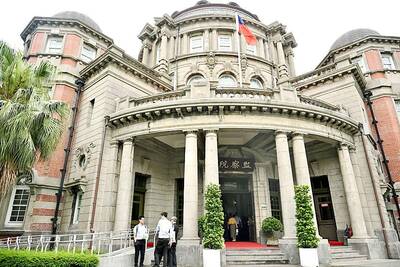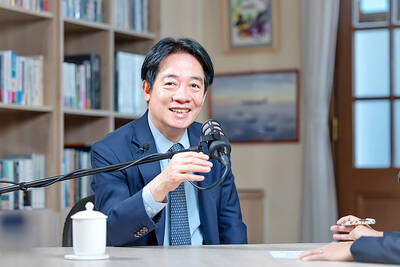US companies are paying the biggest premiums on record in takeovers, a sign executives are growing more bullish about profits and stocks even after the biggest rally for the Standard & Poor’s 500 Index in 73 years.
When Dell Inc agreed to buy Perot Systems Corp for US$3.9 billion in September, it offered 77 percent more than company’s stock price during the 20 days before the deal was announced. Xerox Corp paid 38 percent more than market value when it purchased Affiliated Computer Services Inc for US$5.8 billion.
The average premium in mergers and acquisitions (M&A) in which US companies were the buyer and seller rose to 56 percent this year from 47 percent last year, data showed.
Chief executive officers are so sure the economy will keep recovering they’re agreeing to prices that are 37 percent higher than the average since 2001, when Bloomberg started compiling data.
While stocks in the S&P 500 are trading at the most expensive valuations in seven years compared with profits in the last 12 months, buyers are looking out to 2011, when analysts say earnings will have risen 52 percent.
“M&A activity is a sign of confidence in the future of the country,” said Bill Gerber, chief financial officer at Omaha, Nebraska-based online brokerage TD Ameritrade Holding Corp. “Companies have to look two, three, four, five years ahead.”
The price-earnings ratio on US equities climbed as the S&P 500 surged 63 percent from a 12-year low on March 9, pushing its annual return this year to 22 percent, the biggest since 2003. The index slipped 0.4 percent last week after New York-based bank Citigroup Inc sold shares at a discount and investors speculated US Federal Reserve Chairman Ben Bernanke is preparing to raise interest rates next year.
Higher takeover premiums may help drive gains in the stock market. A Deutsche Bank AG index of potential US targets has advanced almost seven times more than the S&P 500 since Dubai’s debt crisis roiled global markets last month.
The total value of deals involving US buyers and sellers has plunged 57 percent from its all-time high three years ago to US$306.9 billion this year, data showed.
Record M&A in 2006 helped drive the S&P 500 up 17 percent between mid-June and mid-December, part of a five-year rally in which the index doubled to a record 1,565.15 in October 2007. The measure finished last week at 1,102.47, rebounding from 676.53 in March.
Takeovers picked up this year after the price of corporate assets fell to the lowest level since at least 1994 in March and the financial crisis eased.
S&P 500 companies traded for 1.52 times book value, or assets minus liabilities, on March 9 and now cost 2.22 times, still cheaper than the day before New York-based Lehman Brothers Holdings Inc collapsed in September last year, data showed.
Executives say they’re finding bargains based on projected earnings. Analysts predict per-share income for companies in the S&P 500 will jump to US$94.98 a share in 2011 from US$62.52 this year, average estimates in a Bloomberg survey showed.
While the S&P 500 trades for 22.2 times its companies’ profits over the last 12 months, the price-earnings ratio falls to 11.6 when measured against analysts’ 2011 forecast, Bloomberg data showed.
The multiple using reported profit has fallen to that level once since 1990, in March on concern US$1.7 trillion in bank losses and writedowns would spur a global depression, data compiled by Bloomberg show.
Cheap valuations aren’t enough to spur mergers and acquisitions, said Sanford Bernstein & Co’s Brad Hintz, a New York-based securities-industry analyst who was CFO at Lehman Brothers a decade ago. Gross domestic product growth and confidence in the economy are also necessary, he said.
“What’s the easiest way for a CEO to lose his job?” he said. “He does a bad M&A deal. You see M&A activity picking up when the markets become more attractive with the likelihood that if I buy a company today, an improving economic environment will help that acquisition.”
Takeovers increase the value of shareholders’ stakes 30 percent to 55 percent of the time, according to a 2003 review by Paul Pautler of the US Federal Trade Commission’s Bureau of Economics. Although deals may cut costs for the combined company, they erase value when buyers pay too much, he said.
Mergers could rise 35 percent next year and 23 percent in 2011, Sanford Bernstein said.
The forecast is based on an analysis using data since 1980 that incorporates growth in GDP, corporate earnings and commercial loan volume, which it said are about 72 percent correlated to takeovers.
“M&A is back,” said James Paulsen, who helps oversee about US$375 billion as chief investment strategist at Wells Capital Management in Minneapolis. “It shows improving confidence as companies are willing to pay up to get those deals done.”

Nvidia Corp yesterday unveiled its new high-speed interconnect technology, NVLink Fusion, with Taiwanese application-specific IC (ASIC) designers Alchip Technologies Ltd (世芯) and MediaTek Inc (聯發科) among the first to adopt the technology to help build semi-custom artificial intelligence (AI) infrastructure for hyperscalers. Nvidia has opened its technology to outside users, as hyperscalers and cloud service providers are building their own cost-effective AI chips, or accelerators, used in AI servers by leveraging ASIC firms’ designing capabilities to reduce their dependence on Nvidia. Previously, NVLink technology was only available for Nvidia’s own AI platform. “NVLink Fusion opens Nvidia’s AI platform and rich ecosystem for

WARNING: From Jan. 1 last year to the end of last month, 89 Taiwanese have gone missing or been detained in China, the MAC said, urging people to carefully consider travel to China Lax enforcement had made virtually moot regulations banning civil servants from making unauthorized visits to China, the Control Yuan said yesterday. Several agencies allowed personnel to travel to China after they submitted explanations for the trip written using artificial intelligence or provided no reason at all, the Control Yuan said in a statement, following an investigation headed by Control Yuan member Lin Wen-cheng (林文程). The probe identified 318 civil servants who traveled to China without permission in the past 10 years, but the true number could be close to 1,000, the Control Yuan said. The public employees investigated were not engaged in national

ALL TOGETHER: Only by including Taiwan can the WHA fully exemplify its commitment to ‘One World for Health,’ the representative offices of eight nations in Taiwan said The representative offices in Taiwan of eight nations yesterday issued a joint statement reiterating their support for Taiwan’s meaningful engagement with the WHO and for Taipei’s participation as an observer at the World Health Assembly (WHA). The joint statement came as Taiwan has not received an invitation to this year’s WHA, which started yesterday and runs until Tuesday next week. This year’s meeting of the decisionmaking body of the WHO in Geneva, Switzerland, would be the ninth consecutive year Taiwan has been excluded. The eight offices, which reaffirmed their support for Taiwan, are the British Office Taipei, the Australian Office Taipei, the

CAUSE AND EFFECT: China’s policies prompted the US to increase its presence in the Indo-Pacific, and Beijing should consider if this outcome is in its best interests, Lai said China has been escalating its military and political pressure on Taiwan for many years, but should reflect on this strategy and think about what is really in its best interest, President William Lai (賴清德) said. Lai made the remark in a YouTube interview with Mindi World News that was broadcast on Saturday, ahead of the first anniversary of his presidential inauguration tomorrow. The US has clearly stated that China is its biggest challenge and threat, with US President Donald Trump and US Secretary of Defense Pete Hegseth repeatedly saying that the US should increase its forces in the Indo-Pacific region